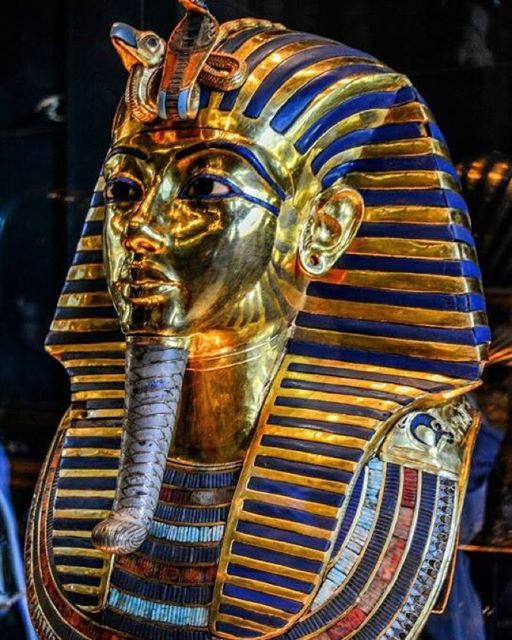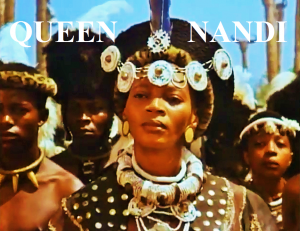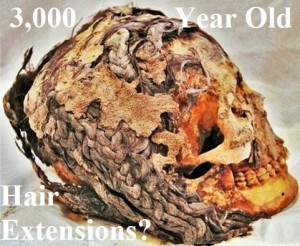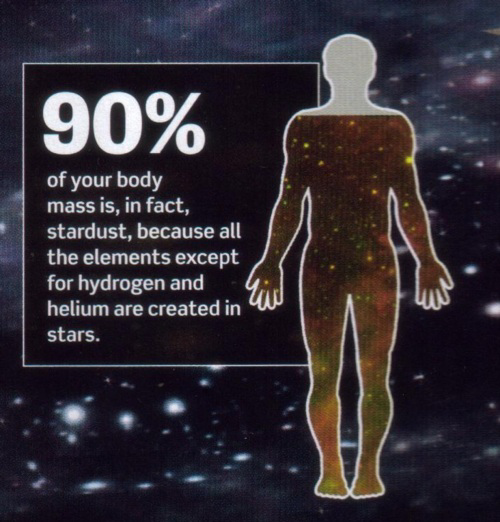Tutankhamen was an Egyptian pharaoh of the 18th dynasty,

during the period of Egyptian history known as the New Kingdom or sometimes the New Empire Period.

He has since his discovery been colloquially referred to as King Tut.

What is behind the mask of Tutankhamen? The inscription on the shoulders and the back of the mask is the prompt that appears first in the shadow of the Middle Kingdom, around 500 years before the time of Tutankhamen. Later, it was included in the book of the dead (Chapter 151). Dedicated to protecting the mask, specify the different parts with corresponding physical members of various gods, driving them individually.

Princess Diana in front of King Tutankhamen mask Egyptian Museum Cairo.


The tomb of the young King Tutankhamen – The Valley of the Kings, Luxor.

Statue of wood, Tutankhamen, 1345-1327 and found in the tomb of Pharaoh Cairo Museum, Egypt.

-Jean-Pierre Dalbéra
King Tut’s CT Scan

Details golden sarcophagus of King Tutankhamen Egyptian Museum in Cairo, Egypt.

In 1922, British archaeologist Howard Carter and his workmen discovered the tomb of King Tutankhamen in the Valley of the Kings in Egypt. The coffin of King Tutankhamen , New Kingdom, Amarna Period, Dynasty 18, reign of Tutankhamen, ca. 1336–1327 B.C.

The golden coffin of the treasures of King Tutankhamen Egyptian Museum in Cairo, Egypt.

This mask of Tutankhamen is an example of the highest artistic and technical achievements of the ancient Egyptians in the New Kingdom. Covering the head of the wrapped mummy in its coffin and activated by a magical spell, no.151b from the Book of the Dead, the mask ensured more protection for the king’s body.

The exact portrayal of the king’s facial features achieved here made it possible for his soul to recognize him and return to his mummified body, thus ensuring his resurrection. The head is covered by the royal headdress and the forehead bears the emblems of kingship and protection: the vulture and uraeus, or cobra. The gold sheets used in this wonderful mask are joined together by heating and hammering. The eyes are of obsidian and quartz and the eyebrows and eyelids are inlaid with lapis lazuli. The broad inlaid collar of semiprecious stones and colored glass ends in falcon heads. Dimensions: Height 54 cm Width 39.3 cm Ancient Egypt.

Details Of The Sarcophagus Of King Tut > Made of pure gold 3000 years ago.

The treasures of King Tutankhamen Protects the golden parachute, wood, with sacred snakes skis. Located on the East wall of the treasures of King Tut, contained his embalmed internal organs.

The throne of Tutankhamen, Dynasty XVIII, the Cairo Museum The throne of Tutankhamen is made of wood, covered with gold and silver, and ornamented with semiprecious stones and colored glass. The scene on the back panel shows the queen anointing the king. The sun’s rays, terminating in hands, radiate towards the royal couple. The king wears a composite crown and a broad collar and the queen wears a diadem. The bodies and wigs of both of them are inlaid with exquisite colored glass and their linen robes are silver. Two projecting lions’ heads protect the seat of the throne while the arms take the form of winged serpents wearing the double crown and guarding the names of the king. A wooden footrest was also used to support the king’s feet. It is engraved with subjugated figures of the foes from the North and South, known as the “nine-bows,” lying bound. The rekhyt birds, referring to the common people, are also shown here under the control of the king.

Ecclesiastical chair Of Tutankhamen EGYPTIAN MUSEUM from the tomb of Tutankhamen (c.1370-52 BC)

Egyptians khopesh the sickle-sword
– Egyptian Pharaoh
The beautiful bust of King Tut

I’m speculating that the skin tone was reddish for some people because of the exposure to the sun after many years, also don’t forget mother nature’s genetics for survival. I myself a caramel complexion turn reddish brown when I’m exposed to the sun for a long period of time, almost like this color above. When I have time I may do a before and after, this is quite normal. -Sola






























































 Take care of your body, it's the only
Take care of your body, it's the only








































